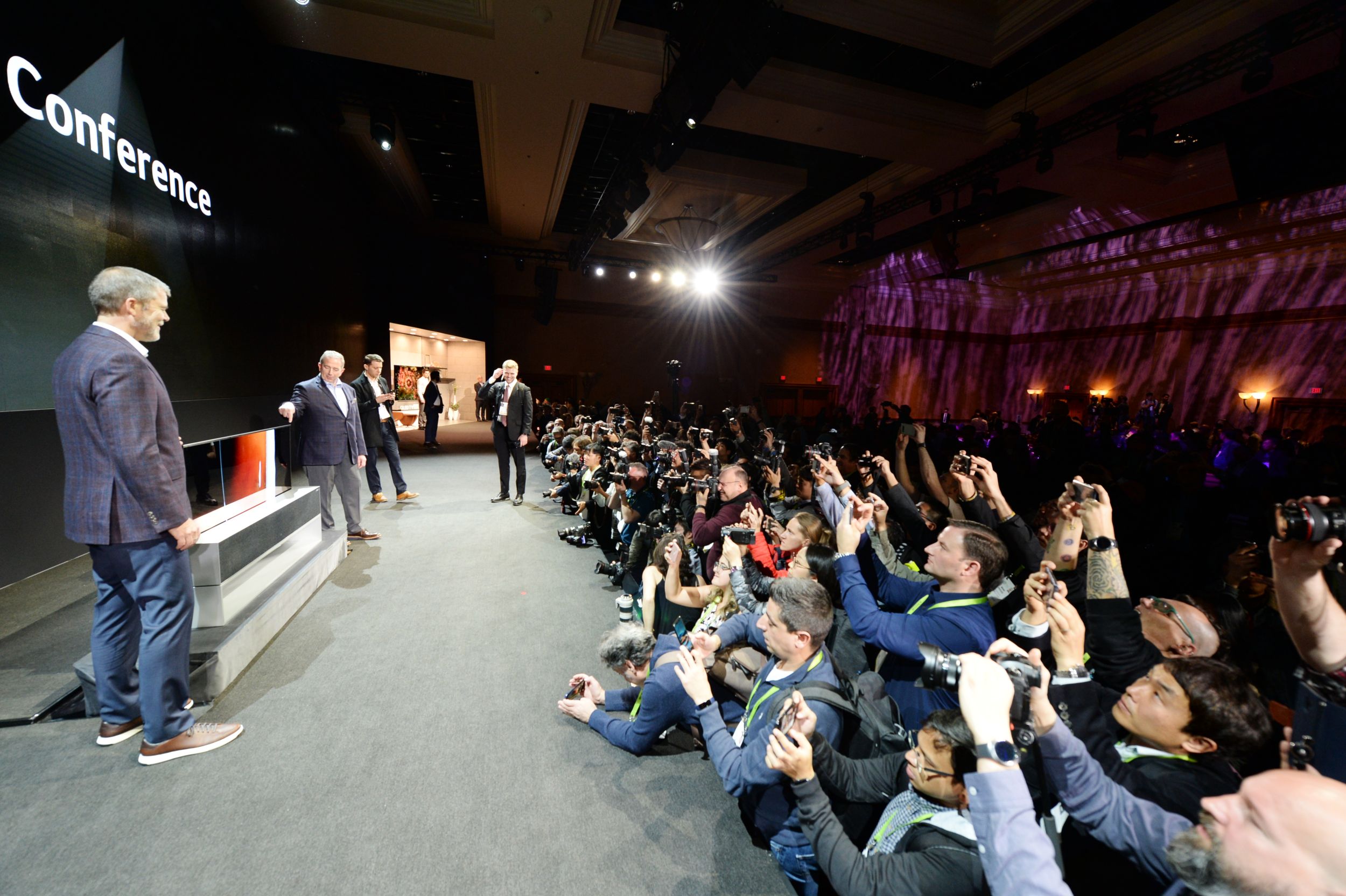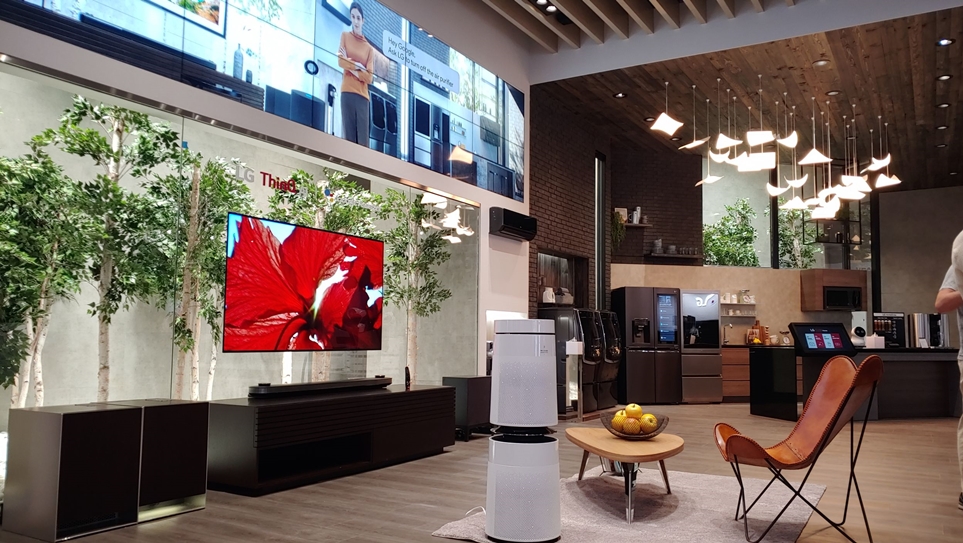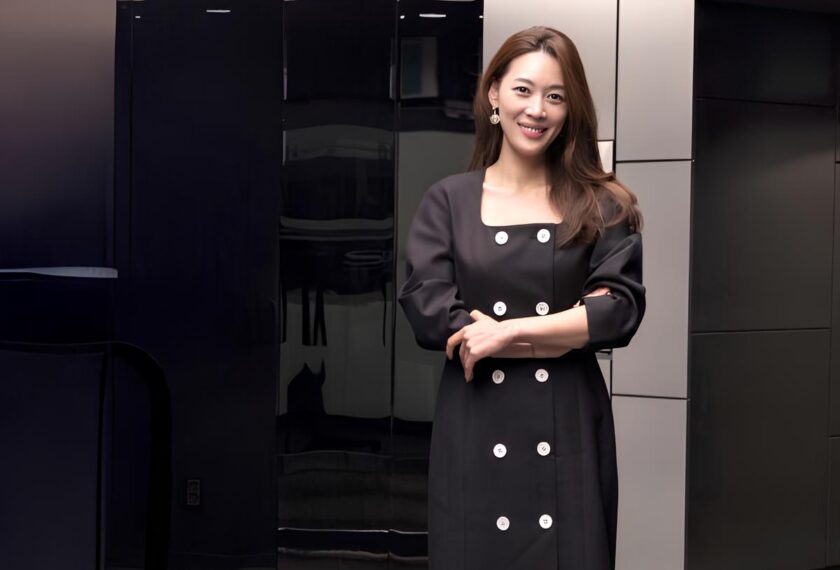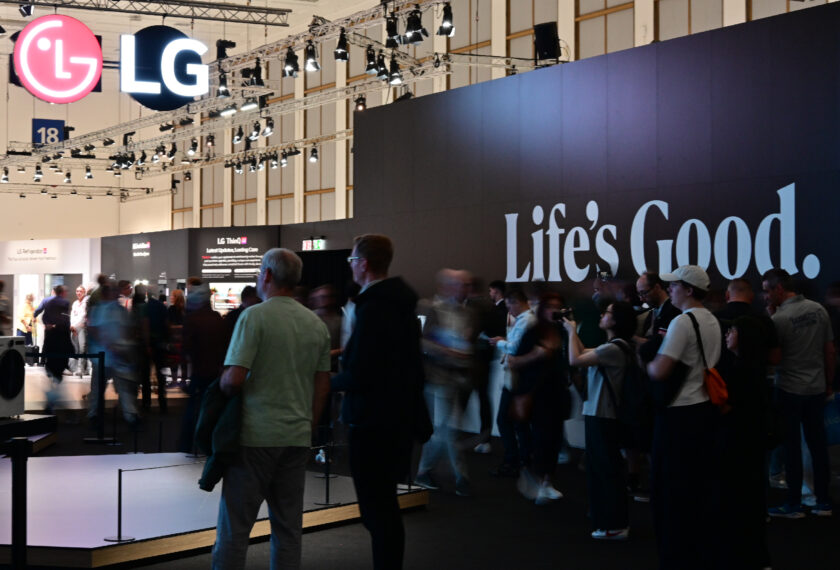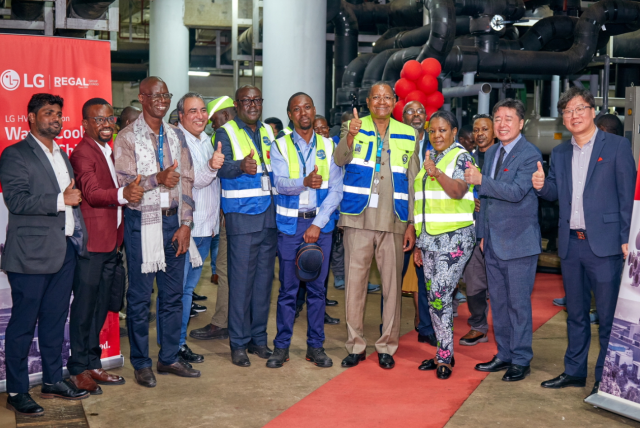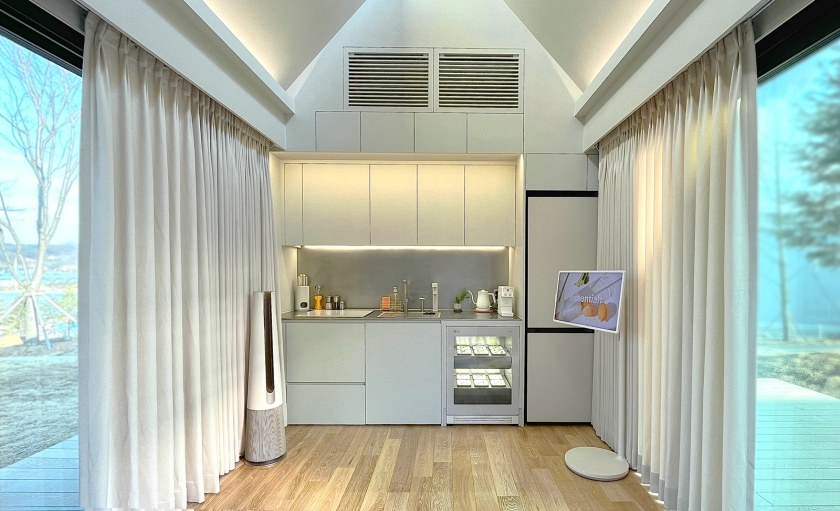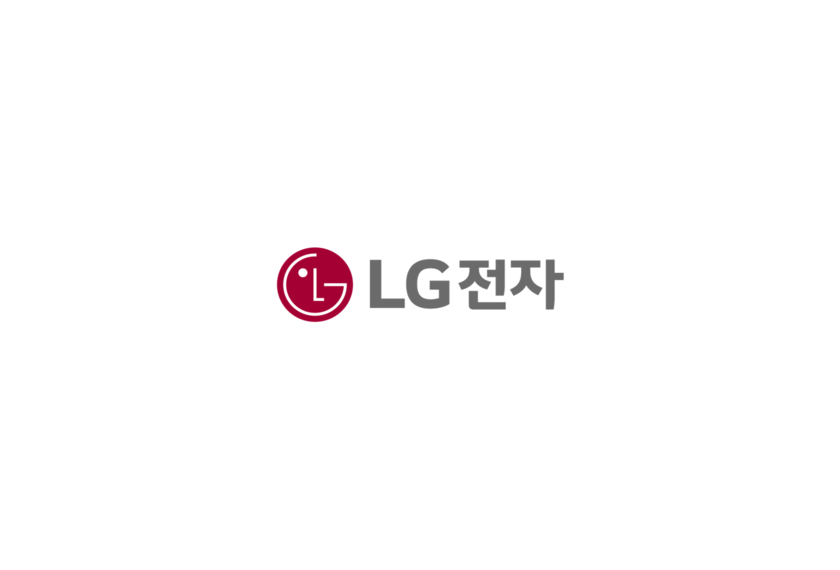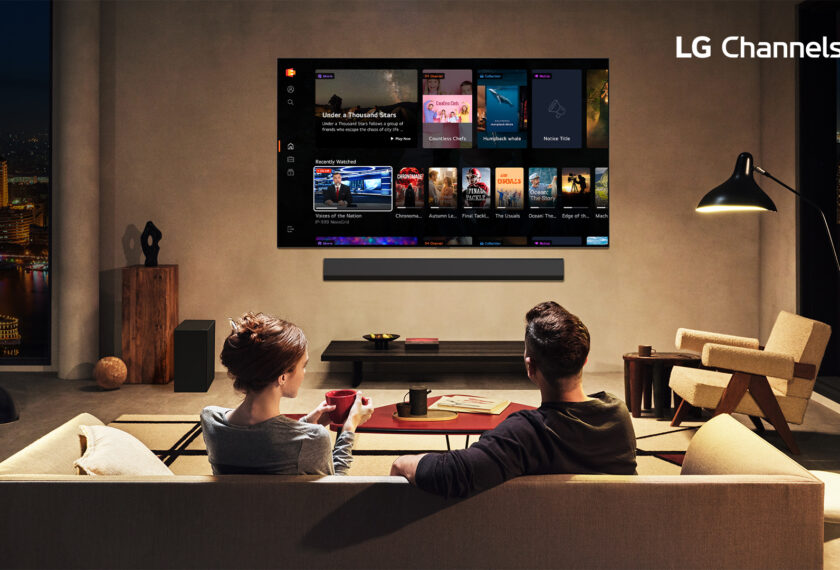인공지능이 나날이 혁신을 거듭하면서 일상 곳곳에 스며들고 있습니다. 이제 말 한 마디로 TV나 음악을 켜고, 스마트폰 하나로 집 안의 가전도 제어할 수 있죠.
앞으로 인공지능은 계속 진화하면서 우리의 삶에 많은 영향을 미치게 될 텐데요. 과연 어떤 모습으로 우리에게 윤택하고 편리한 삶을 안겨줄까요?
LG전자가 CES 2019를 여는 개막 기조 연설에서 그 방향을 제시했습니다.

CES는 글로벌 최대 규모의 전자/IT 전시회인데요. 특히 CES의 개막 기조연설은 전 세계적으로 주목 받는 자리인 동시에 한 해의 기술 트렌드를 제시하는 중요한 자리이기도 합니다. 이에 올해도 국내외 기자, 업계관계자, CES 관람객 등 3천여 명이 참석해 개막 기조연설에 주목했습니다.
올해는 LG전자 CTO(최고기술책임경영자) 박일평 사장이 ‘더 나은 삶을 위한 인공지능’을 주제로 연설을 진행하는 영광을 안았습니다. 이번 개막 기조연설에서는 ‘LG 클로이 가이드봇(LG CLOi GuideBot)’과 인공지능 관련 명사들이 함께 무대에 올라 의미를 더했습니다.
그럼 지금부터 LG전자가 말하는 ‘더 나은 삶’을 위한 인공지능은 어떤 모습일지 함께 확인해볼까요?
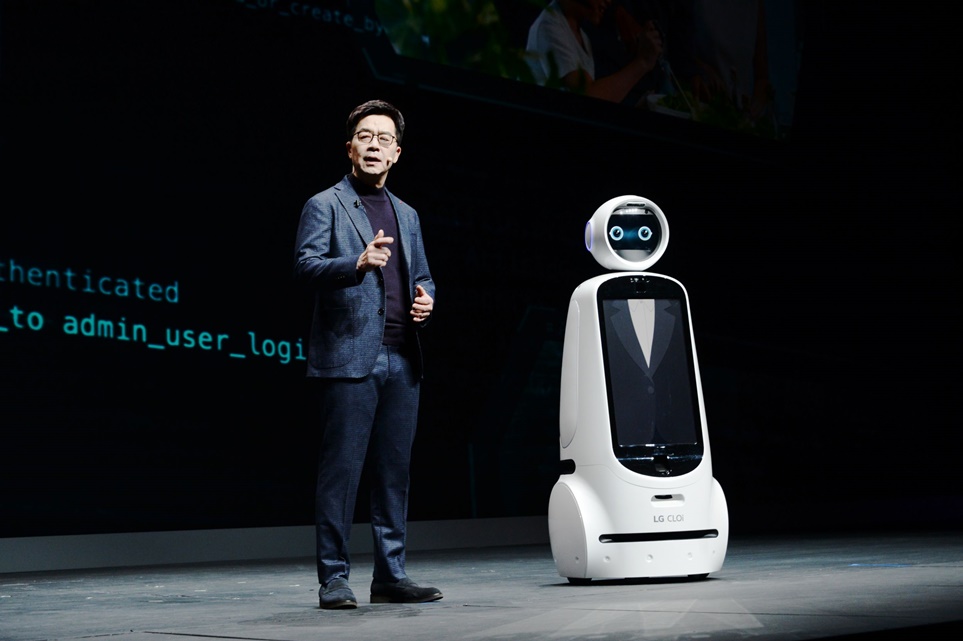
인공지능이 우리의 삶을 얼마나 그리고 어떻게?
기술이 우리의 삶을 ‘더 좋게’ 바꾸고 있다는 건 많은 분들이 동의할 텐데요. 박일평 사장은 “그렇다면 얼마나? 그리고 어떻게?”라는 의미 있는 질문을 던졌습니다. 각종 가전의 발전으로 집안일을 하는 시간은 약 75% 줄었지만, 많은 정보들 사이에서 선택을 해야만 하는 ‘인지노동(cognitive labor)’의 양은 늘었다며 고민해볼 화두임을 명확하게 했습니다.
그리고 미래 인공지능은 고객의 더 나은 삶을 도와주는 방향으로 가야 한다고 강조했습니다.
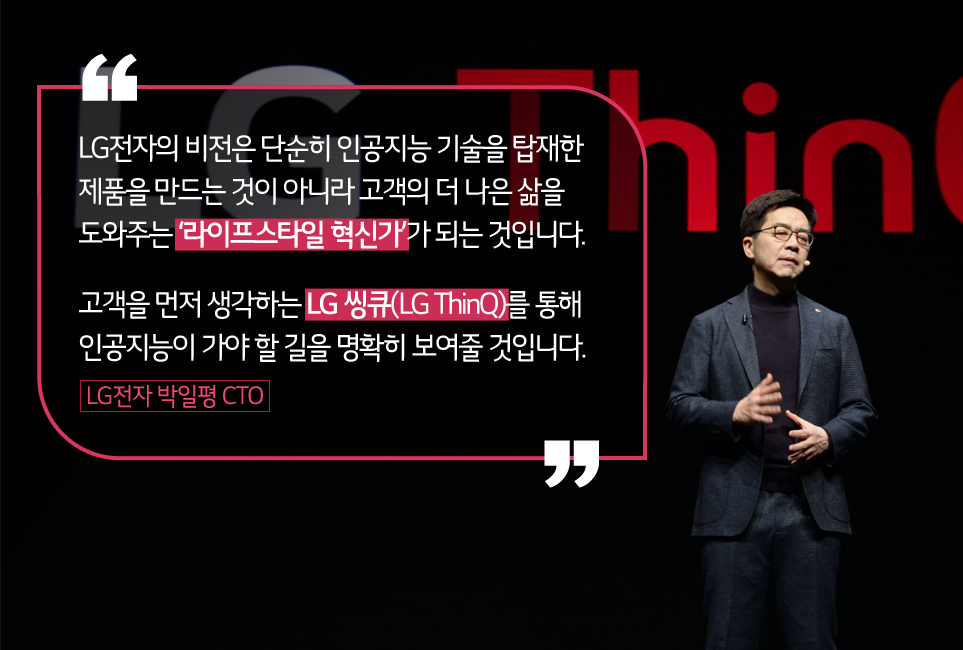
LG ThinQ로 만들어 나갈 새로운 라이프스타일
박일평 사장은 이 자리에서 미래 인공지능의 방향뿐만 아니라 LG전자의 인공지능 브랜드 ‘LG 씽큐(LG ThinQ)’로 한층 더 진화시킬 인공지능의 미래를 구체적으로 제시했습니다. ‘LG 씽큐’가 추구하는 지향점이기도 한 ‘맞춤형 진화’, ‘폭넓은 접점’, ‘개방’ 등 3가지인데요. 조금 더 자세하게 살펴보겠습니다.
① 맞춤형 진화 : 고객의 니즈를 이해하고 진화하는 지능
박일평 사장은 미래의 인공지능이 결국 단순히 명령을 따르는 것이 아니라 사용자의 목적과 니즈를 이해할 수 있는 수준까지 진화해야 한다고 말했습니다. 고객이 말하지 않아도 인공지능이 스스로 사용자의 의도에 맞춰 최선의 안을 먼저 제안해야 한다는 건데요.
예를 들면, 인공지능을 탑재한 세탁기가 사용자의 캘린더에 일정이 많은 것을 보고 스스로 스피드 모드를 선택해 빨래 시간을 줄여주고, 롤러블 TV는 사용자가 전날 보다가 잠든 프로그램을 다시 알아서 틀어주는 식입니다.
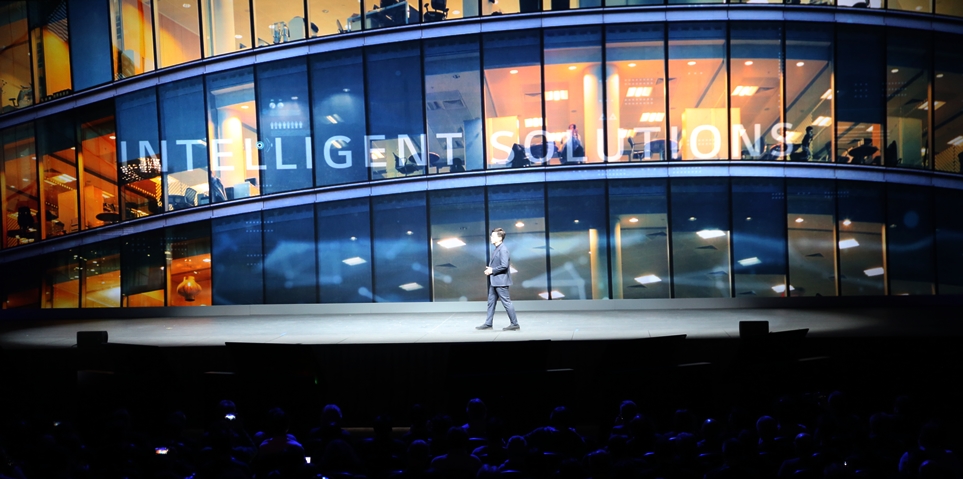
박일평 사장은 이를 가능하게 하기 위해서는 인공지능이 사용자의 습관, 성향, 감정들을 계속 학습하고 진화해야 한다고 설명했습니다. 이날 개막 기조연설에 함께 한 랜딩 AI(Landing AI) CEO이자 인공지능 분야의 세계적 석학인 앤드류 응(Andrew Ng) 박사도 박일평 사장의 의견에 동의하며 “곧 일상에 존재하는 제품들이 우리와 함께 진화할 것”이라고 말했습니다.
실제 ‘LG 씽큐’는 이번에 한층 진화하면서 단순히 명령어에 따라 동작하는 기존 방식을 넘어 고객에 꼭 맞는 솔루션을 제안하기도 하죠. 인공지능의 진화는 서서히 이뤄지고 있는 셈입니다.
② 폭넓은 접점 : 인공지능으로 삶의 모든 영역을 연결하는 서비스
다음은 ‘접점’입니다. 박일평 사장은 가전제품에서 로봇과 디지털 사이니지에 이르기까지 삶의 모든 측면들이 연결되어 있는지가 관건이라며 인공지능으로 집, 자동차, 로봇 등 모든 제품과 공간이 연결될 수 있다고 강조했습니다.
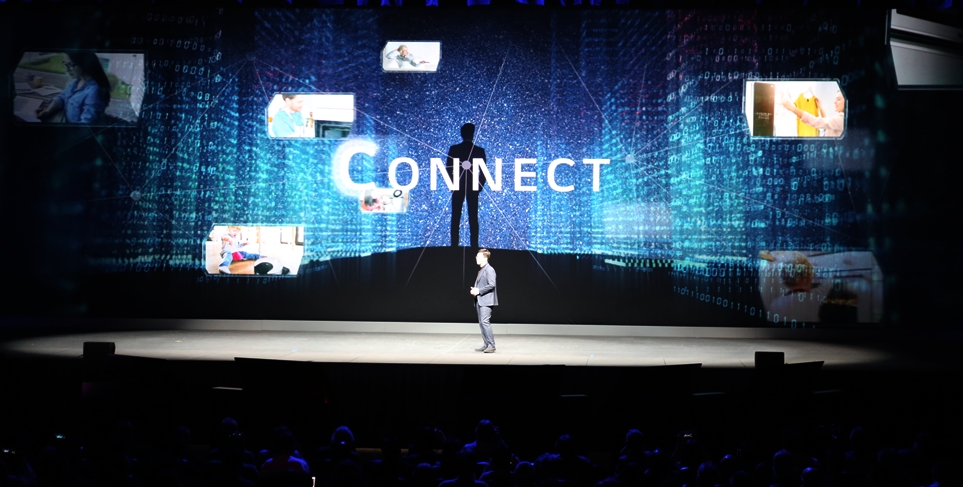
박일평 사장은 UC 샌디애고 헨릭 크리스텐슨(Henrik Christensen) 교수와 인공지능 로봇에 대해 대화를 주고 받다가 이를 위한 방법으로 ‘로봇 서비스 제공 플랫폼’ 구축을 언급했습니다. 실제 LG전자가 개발하고 있는 분야이기도 한데요. 로봇들이 보고, 듣고, 배우는 것을 클라우드를 통해 공유할 수 있는 플랫폼입니다. 이 플랫폼을 개발하면 로봇이 협업해 사용자에게 더욱 다양하고 지능적인 서비스를 제공할 수 있을 것으로 보입니다.
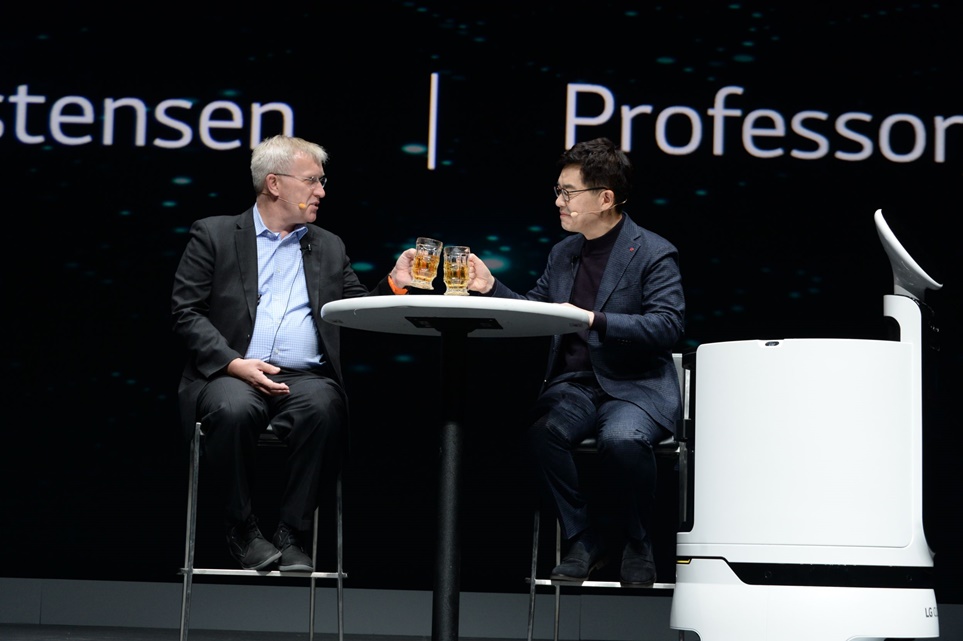
박일평 사장은 더 나아가 인공지능 서비스의 스케일을 집과 자동차뿐만 아니라 공장, 심지어 도시 수준까지 확대할 수 있다고 설명했습니다. 인공지능으로 모든 공간의 기기들을 서로 연결해 사용자에게 꼭 맞는 서비스를 제공한다는 건데요. LG전자가 보유한 시스템 에어컨, 스마트 전력 관리 시스템, 디지털 사이니지 등의 기술을 활용한다면 충분히 가능한 부분이 아닌가 합니다.
③ 개방 : 다양한 분야와의 협업
물론 이 모든 것을 LG전자 혼자서 다 할 순 없겠죠. LG전자는 고객에게 최고의 인공지능 경험을 선사하는 것을 목표로 다양한 분야의 많은 이들과 협력하고 있습니다. 특히 박일평 사장은 다가올 자율주행 시대에도 LG전자의 전문성이 발휘될 것이라고 강조했습니다.
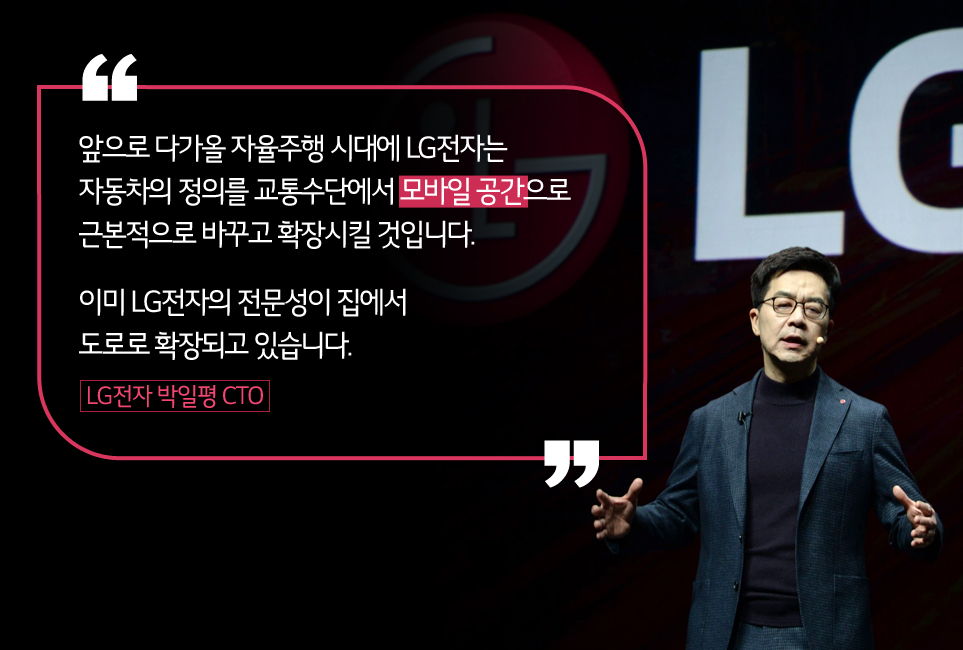
LG전자는 사용자들이 자율주행으로 새로운 경험을 얻을 수 있도록 하드웨어와 소프트웨어 등 다양한 분야의회사와 적극적인 협력을 추구하고 있습니다. 실제 LG전자는 자율주행에서 꼭 필요한 5G 기술을 위해 퀄컴(Qualcomm)과 함께 협력하고 있죠. 뿐만 아니라 룩소프트(Luxoft)社, 애디언트(Adient)社, 히어(Here)社 등 자동차 관련 하드웨어, 소프트웨어 기업과 파트너쉽을 체결하고 프로젝트를 진행하고 있습니다.
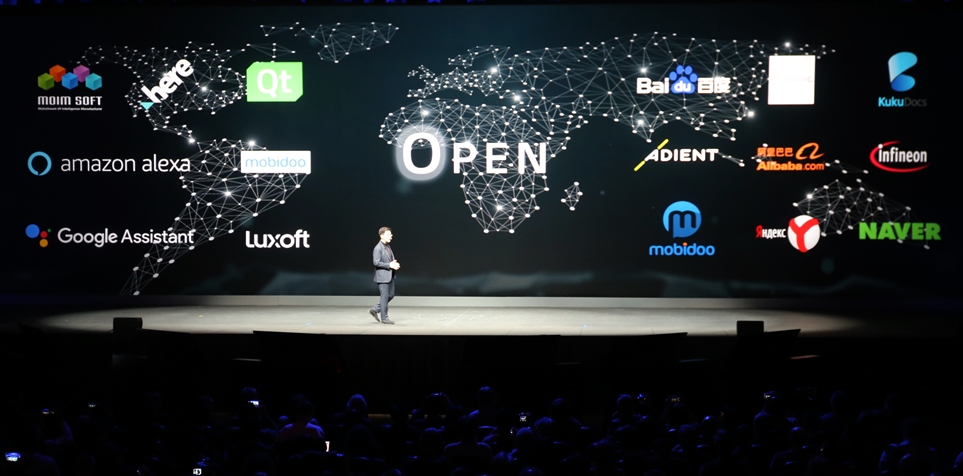
지금까지 CES 2019 개막 기조연설에서 LG전자 CTO 박일평 사장이 제시한 인공지능의 진화 방향과 LG 씽큐로 진화시켜 나갈 인공지능의 미래에 대해 살펴봤는데요. 앞으로도 LG전자는 60년간 쌓아온 전자/IT 기술을 토대로, 진화(Evolve)•연결(Connect)•개방(Open)에 기반해 LG전자 인공지능 ThinQ를 꾸준히 발전시키며 ‘인공지능 라이프스타일’을 선도해 나가겠습니다. 기대해주세요!
동영상 원고
AI For An Even Better Life v.25Why AI?
Thanks, Gary,
for such a kind introduction.
And good evening, Vegas –
welcome to CES 2019!
I’m SUPER excited
for what’s going to be
another great show.
And what a privilege it is
to be giving a pre-show keynote
in this magnificent theatre
named after me!
To kick it all off tonight,
for the next hour or so,
I’m going to talk about LG’s vision
for our future with artificial intelligence.
But before I begin,
let me throw you
a very simple question.
Is technology
making your life
better?
I’m not going to ask
for a show of hands
because I know this is CES.
And, of course, it is –
we shouldn’t be here otherwise.
Human history has indeed
been a tale of technology and progress.
And us,
the electronics industry,
we can take pride in that.
So – yes,
technology is making our lives better.
But what if I were to ask –
how MUCH better?
And better HOW?
Here’s an interesting graph
I found the other day.
Yes, thanks to electricity,
refrigerator,
washing machine
and vacuum cleaner –
over the past 100 years,
we’ve managed to bring down
the average number of hours
spent on housework
by about 75%.
That’s a saving of SIX hours
out of your 24-hour day.
But ironically,
from about 1970,
with ALL the great innovations
such as PC,
the internet,
and smartphones,
that wave of progress
has been slowing down.
So is this it?
Is a couple of hours of chores everyday
just inevitable?
It looks as though,
at least on this measure,
life has not got all that much better
for the past few decades.
And what about this?
All throughout that time,
the amount of cognitive labor
has shot through the roof!
And we can feel it.
There’s just SO much information
and SO many choices
which demand our attention.
Think about the latest devices!
Manuals,
Settings
and updates –
no wonder we feel more tired than ever.
So I ask again –
are we making our lives BETTER?
How MUCH better
and better HOW?
CLOi: IP, IP – I’m very sorry to interrupt your keynote, but I can sense a lot of people feeling surprised and worried. I thought I should let you know.
Oh, hey, CLOi. Haha.
Sorry, I forgot to introduce you.
Everyone,
this is LG CLOi GuideBot.
You’ll find her friends at airports
assisting travellers,
but she’s here tonight
to help me out with my keynote–
the first robotic co-speaker
at a CES keynote!
CLOi: Hello, Vegas! It’s great to meet you all. I’m sorry IP made you all surprised and worried.
[facing the audience]
Well, don’t worry, CLOi.
I wouldn’t have asked the question
if I did not have an answer.
Because,
you see,
that’s why
we at LG
are starting a new chapter
in the story of electronics.
And our answer is here.
Artificial Intelligence.
But don’t just take my word for it
because I’m inviting
one of the most forward-thinking
pioneers of our time
to tell you
how AI will continue our tale of progress.
CLOi, who’s our first guest tonight?
CLOi: IP, your first guest is Peter Diamandis. He’s the Founder and Executive Chairman of XPRIZE Foundation, Executive Founder and Director of Singularity University.
Well, ladies and gentlemen,
please welcome Peter
with a big round of applause!
[GUEST SPEAKER] Peter Diamandis, MD | Founder & Chairman, X PRIZE Foundation
1.
Dr. Park, thank you for that kind introduction. It’s a pleasure to be here to support both your vision and LG’s vision for AI improving our lives.
I had the pleasure of writing a New York Times bestseller called . And we truly are living during the most extraordinary time ever in human history.
2.
This is an article that came out this week from Wall Street Journal that shows that the world is getting better constantly over the last 200 years. We’ve almost wiped out extreme poverty from the planet Earth.
3.
The average global life expectancy has doubled over the last few hundred years. We’re about to add another 20-30 healthy years because of the impact of AI and its impact on health.
4.
Here we see the numbers for transportation. Flying in an airplane is clearly the safest mode of transportation. Cars are coming up next and as we head towards fully autonomous cars, the death rate tally for cars also dropped to zero.
5.
Why? Why Now?
It’s the impact of exponential technologies.
6.
Here we see the growth of computation over the last 100 years. We’re in the 5th paradigm known as the Moore’s Law.
7.
And as this continues, we’re going to see in 2023 that $1,000 buys you the computational power of the human brain – 1016 cycles per second. And 25 years later, now $1,000 buys the computational power of the entire human race.
8.
So this is where we are right now – in this exponential growth. Faster, cheaper computers and AI together are driving all these exponential technologies – networks, sensors, robotics, AI, 3D printing, synthetic biology, AR, VR – which are combining and converging to make our lives automatic and magical – what I call automagical.
9.
Now, I believe we’re all gonna have a version of Jarvis – an AI software shell in our homes, in our cars, on our bodies, that we give permission to read our e-mails and listen to our conversations, look at the chemicals in our blood streams to make our lives better.
Well, I’d like to do is take just a few examples where AI is going to transform our lives.
So here we are. Let’s talk about these 43.
Health – today, none of us are truly monitored. My airplanes and my cars – hundreds of sensors hundreds of microprocessors (are) constantly monitoring how they are. AI is gonna become your physician. It’s gonna be monitoring all the data from your body, on your wearables, your consumables, your implants. And it’s ultimately gonna make each of us the CEOs of our own health. Measuring our health day to day, going from what is today sick care when you’re only taken care of after you’re sick to healthcare where you know how you are and what’s going on.
Let’s look at learning. Our educational system is hundreds of years old and hasn’t changed in that time. Today, in a classroom, half the kids are bored and half the kids are lost. AI will ultimately be your teacher. The teacher of your children that is able to give your child personalized education – knows their language skills, knows their favourite sports star, knows exactly the colours they love and the movie stars they enjoy and give them personalized education like never before. Combine AI and VR, and if you want to learn about ancient Rome, you’ll put on your VR goggles and you’ll go into an AI-created version of Rome where every person you meet is an avatar driven by the knowledge of that time from 1,000 years ago.
And finally the future retail. AI will become your shopping assistant. Your fashion advisor. It’ll know what you need to buy before you know you need to buy it. Ultimately, it’ll make shopping fast and easy. And ultimately it will do the shopping for you.
So we’re heading towards a world where AI, driven by a mass amount of data and your ability to trust it, will make our lives automagical.
10.
BUT here’s a catch. For this vision of automagical life to become a reality, AI needs to be truly intelligent, NOT just an extension of automation. And intelligence is not the same as super-fast computation. We’ve already had AI beating humans in chess and in go, but it wouldn’t be wrong to say that that kind of narrow intelligence still more like a type of computer, a machine.
We need to go beyond this. For this AI revolution really automagically transform how we live our lives, we need an AI that works more like us humans. It should be able to learn more independently and more widely like we do. It should be able to apply its learnings to a whole range of functions in a coordinated way, again like we do with our body. That way, we’ll be able to fully integrate AI into our lives and enjoy its benefits.
Of course, I say this only because I know that the rest of IP’s keynote tonight will be all about how LG plans to make this happen. And I can’t wait to hear him because a company like LG, with all their fantastic products and solutions, they’re really perfectly positioned to deliver this true intelligence. So that’s it from me and I’ll go and get IP out again. Thank you!
[Guest speaker exits]
Thank you, Peter,
for your enlightening words.
So,
AI IS the future –
but ONLY IF
we can achieve
TRUE intelligence.
The question is,
what can LG do about it?
Well, we’re already using AI
to make our products better.
Take your LG OLED TV for example.
It already comes
with the state-of-the-art display,
but thanks to our AI chip for TV
called Alpha 9,
it will automatically optimize its
display and sound settings
to what you’re watching –
we’re building
a LEARNING DISPLAY.
And we want to do the same
with ALL our devices,
which is why we’ve developed
the world’s most advanced AI chip
for home appliances.
It’s a System-on-Chip
which combines
voice recognition,
visual recognition,
WiFi connectivity
AND a whole range of
sensor interfaces
ALL in a single piece.
Its built-in AI processor
will allow a whole range of devices
to LEARN and EVOLVE.
For your washing machine,
we’re using reinforced learning
to achieve optimal load distribution.
Now,
that’s one question
which has troubled
THOUSANDS of experts
for DECADES.
And we’re FINALLY cracking it
with the power of AI!
That means
a RADICAL reduction in vibration,
giving A LOT less noise
AND shorter washing time –
In fact, we’re cutting the pre-spin cycle time
by up to 40%!
What about ‘SELF-HEALING machine?
OTA, Over-The-Air update,
is a great way of making sure
that your intelligent machines
are always running on up-to-date software.
Furthermore, we’re already working
with an industry-leading partner
to go MUCH further.
AI-enabled self-healing machines
will be able to detect malfunctions
and automatically fix them
WITHOUT stopping operation.
Now,
these are all wonderful innovations
which utilize AI
to IMPROVE our products.
But tonight,
I want to talk about
more than just IMPROVEMENTS.
What I have for you
is a much more ambitious promise
to offer
a NEW and DARING definition of
BETTER
LIFE –
the next generation of AI
which will make possible
TRULY intelligent machines.
With our devices,
AI will EVOLVE by learning over time
to provide more personalized care for you.
It will CONNECT
SEAMLESSLY with your lifestyle
through every possible touchpoint.
And it will OPEN UP
an eco-system of innovation
where we can ALL share
our expertise and experience.
EVOLVE,
CONNECT
and OPEN –
EVOLVE,
CONNECT
and OPEN –
is how we’ll shape
a NEW future of AI in electronics.
And to that vision of AI
for TRULY intelligent living,
we gave the name LG ThinQ.
But LG ThinQ is NOT just a brand.
It’s a new LANGUAGE
for articulating our AI vision,
a USER-CENTRIC framework
for thinking and using AI
in ALL our future innovations.
In one word,
ThinQ summarizes our vision
for a NEW LIFESTYLE with AI –
have a look!
[VIDEO] Home
1 Understanding Your Purpose & Needs
[HOME 섹션 프로시니엄 매핑: CTO 등단과 함께]
Poor Mark –
We’ll come back to his story
so bear that in mind.
What we just saw there
was a glimpse
of how life will change
with AI.
And for the rest of this evening,
I’d like to walk you through
a few points of insight
about LG’s fresh vision
for the next generation of AI.
Our first point
is that it should go from
simply recognizing your command
to UNDERSTANDING
your NEEDS
and your PURPOSE.
Not just executing your orders,
but reading your INTENTION
and recommending
the best way of achieving it.
That way,
we can finally FREE ourselves
of the burden of choice
and just enjoy what’s right for us.
[SCREEN: virtual home scene]
Let’s take an example of doing laundry.
So you pick up the basket
and come to your washing machine.
What are you faced with?
OPTIONS.
How long do you wash
and how many times should you rinse?
How much detergent?
And how do you dry it?
In the dryer or hang it out?
The weather seems nice NOW,
but will it RAIN later?
Suddenly,
you just want to drop it all
and get back to your TV!
Well –
how will it be different
with LG’s AI washing machine?
CLOi,
can you tell me
how my laundry experience will change?
[SCREEN: virtual home scene – 세탁기 클로즈업]
CLOi: Sure. IP, you’re pretty good with doing your laundry on a regular basis. So most often you have a small load. Your washing machine knows that by now. And it also knows that you don’t have much time because your calendar is full of meetings. So, when you put in a load, the machine will automatically choose speed wash course which can get it done within 20 minutes. The weather next week is going to be mostly cold and dry, so we’ll also add static reduction – because we’ve learned that you like that.
Oh wow,
and all I’ve done
is load the washing machine.
So – Ok, I’ve got my washing done.
Why don’t we watch some TV?
You know –
we showed
the world’s first rollable TV
this morning.
CLOi: Of course. It’s rolling up there for you. Showing your favourite food programme from where you left off last night.
[SCREEN: virtual home scene – 펼쳐지는 롤러블 TV 클로즈업: 크림 파스타 동영상]
Ah – great.
And that looks really delicious.
Actually, I haven’t had my dinner yet
because of this keynote.
CLOi, do you think we can have that
for dinner later?
[SCREEN: virtual home scene – TV가 레시피 제시 > TV가 냉장고와 커뮤니케이션 > 냉장고 클로즈업: 잔여재료 확인 > 크림 재료 칼로리, 일일 권장 칼로리, 체중 변화 등 표시 > 대체재료 (half-and-half)제품 추천 및 주문 인터페이스 > 오븐 예열 ]
CLOi: Sure. Your TV’s showing the recipe for you. And it’s talking to your refrigerator to check if you have the ingredients. It looks like you have some chicken in the refrigerator and there should be enough pasta. And it’s saying maybe you can substitute heavy cream with low-fat alternative since we’re watching your shape. If you’re okay with that, we’ll have that ordered and get oven preheated for when you get back.
IP: I’d love that, thanks!
Looks like
I’ve got my dinner sorted as well!
Please put your hands together for CLOi!
2 Evolving Intelligence
So that’s all great.
But here’s an important point:
For this kind of interaction
to be MEANINGFUL and useful,
my partner, LG CLOi there,
has to REALLY KNOW me.
My habits,
my preferences
and even my EMOTIONS.
This knowledge is what enables AI
to really THINK for me
rather than just pouring out information.
And that’s why
our AI needs to be
an EVOLVING intelligence.
AI devices need to be
LEARNING machines so that
the more and longer you use them,
the more they’ll learn about you
and the better they’ll understand you.
Just like any relationship –
with friends or family.
The better you know someone,
the better you can care for them.
Well, to tell us more about
this idea of evolving intelligence,
I’m delighted to invite to this stage
one of the world’s leading authorities
on artificial intelligence.
CLOi?
CLOi: Ladies and gentlemen, please welcome the CEO and Founder of Landing AI, Dr. Andrew Ng!
[GUEST SPEAKER: Andrew Ng | CEO & Founder, Landing AI
Name Title
2.
Thank you Dr. I.P. Park and the LG Electronics team for having me.
AI really is the new electricity, it will impact every industry and change the way we interact with many parts of our lives
Through my work with Landing AI, I’ve been spending a lot of time with CEOs of large companies looking to transform themselves for the AI era. This isn’t just as simple as hiring an AI engineer; a true AI transformation requires a company-wide AI strategy, building a strong AI team, and aligning multiple projects to take advantage of new AI breakthroughs.
I’ve been incredibly impressed with Dr. Park’s leadership on bringing LG into the AI era, and leading especially in building better home experiences for LG users through more intelligent consumer electronics.
3.
Even though AI has already invaded many products you see at CES, AI technology continues to get better every year. I want to share you with 3 recent trends, and show how they’ll affect your products in the future.
First: Small data.
Modern AI works best if it has a lot of data. The more data, the better the performance. This is why we talk about Big Data—AI systems that can use millions of datapoints.
But if you’re using a washing machine, you don’t want to have to wash millions of cycles before it figures out how to optimize for your loads.
There is right now rapid progress in AI using Small Data. AI that can become intelligence with much smaller amounts of data. This type of technology will allow a washing machine, after just 3 or 4 loads, to start optimizing to your water and your detergent and your laundry.
Imagine if every device at CES could become more intelligent after 3 or 4 uses—won’t that be cool! That’s what I hope Small Data algorithms can do.
4.
Second, learning at the edge.
Advances in silicon are making it easier for AI to learn at the edge—that means the learning happens right there in your washing machine or air conditioner—rather than in the cloud. So rather than the air conditioner needing to send data to the cloud—to the big data center—for processing, increasingly you’ll see the air conditioner having the silicon chip run the AI software completely locally. This improves user privacy and security, and also lets your system learn more quickly, and reduces the need for transmitting data to the cloud.
5.
Finally, life long learning.
We want our home appliances to learn on their own, forever and ever. So that it’s always getting better.
In the previous era, maybe your vacuum cleaner will get smarter once a month, when the vacuum cleaner’s engineers did an app store update. So it was engineers—once per month—upgrading the vacuum cleaner’s intelligence.. In the future, your devices will learn continuously, by themselves; so that even 1 year from now, it is still getting smarter day by day, and all by itself, to better adapt to how you use your home. And if you move to a new house but keep the vacuum cleaner, it should learn to adapt to that too.
6.
These three trends: Small data, learning at the edge, and lifelong learning—are converging to enable LG’s vision of evolving intelligence, where our everyday products are learning constantly and evolving alongside us. I’m excited about LG’s vision of enabling this type of intelligence into every device in our homes, and proud to be able to support them in this work.
7.
Products will—through small data, edge learning, and lifelong learning–learn your behavior, your preferences, and your habits. The items in your home will be able to get smarter based on how you like to live.
You can imagine a future in which:
8.
Your air conditioner adapts to outside temperatures on its own, saving you energy and making you more comfortable
Your vacuum cleaner learns the area of the house that has the most foot traffic, and automatically cleans those spots more often to save you time
Your refrigerator can learn what you like to eat, and how often you like to restock your food. It will also be able to place the order for you to save you time and keep you well fed
Your home will look very different once intelligent devices evolve to not just be smarter, but be smarter for us.
9.
I’m excited that LG is leading the way in building these evolving intelligent products.
By learning how we like to live, and anticipating our needs, LG is helping to bring us into an AI-powered future.
[Guest speaker exits]
3 Design Your Time & Experience
[ROAD 섹션 프로시니엄 매핑: CTO 등단과 함께]
Thank you, Andrew.
So that was our vision
for a TRULY smart home
with evolving intelligence.
Now you could be thinking,
“If THAT’S how my home’s gonna work,
I’m not going out EVER again!”
Well, I’m afraid that
most of us,
for some while at least,
will still have to travel
to get to work and to school.
And there,
we’re seeing
another great wave of innovation –
AUTONOMOUS VEHICLES.
It’s definitely
the BIGGEST transport revolution of our time.
And needless to say,
artificial intelligence
is one of the KEY foundations
of autonomous driving technology.
But what is LG going to do
about autonomous vehicles?
Well, here’s what we’ve been working on –
Just watch!
[VIDEO] How LG designs time NOT spent driving
Autonomous vehicles
are no longer a distant dream.
They’re already here
and you’ll see them all around Vegas this week.
But for tonight,
I wanted to think about the NEXT question;
what are we going to DO
sitting in a self-driving car?
What are we to do
with ALL THAT TIME
saved from NOT driving?
Because that’s the key question
which will determine
the REAL impact of autonomous driving
on our QUALITY OF LIFE.
Saving time is one thing,
but making a good and effective use
of that saved time
is QUITE another.
In that wonderful video,
you saw Mark in an autonomous shuttle
where we’ve been working
to design and develop
a WHOLE NEW world
of in-car experience.
When you’re next in Seoul,
you HAVE to come
and see our first prototype
because it’s simply AMAZING.
You see –
what we’re doing with it
is to CHANGE
the very DEFINITION of car
from a means of transport
to a MOBILE SPACE.
And you can turn it
into ANY space you’d like –
mobile office,
conference room,
or even private cinema.
You can even shop
at that store you just drove past
by re-playing the view outside your window
and browsing through the virtual store.
And, of course,
it’s about much more than just screens.
The thing about in-car experience
is that it is almost entirely
a SITTING experience –
which is why
we’ve been working
with a leading seat manufacturer Adient
to develop AI-enabled smart seats.
Once you’re onboard,
the seat will recognize you
and AUTOMATICALLY adjust itself
to your personal seating preferences.
And you’ll have a FULL control of the car
from the comfort of your seat
through multimodal interaction.
Using AI algorithm,
integrated headrest audio
will form a PERSONAL sound zone around you
so that the sound for YOUR activity
won’t be interfered
by those of other passengers.
And when you need refreshments,
simply pick them up from
the built-in snack-bar
and the purchase will be made automatically.
And with ALL these innovations,
our goal is to CHANGE
the meaning of that question,
‘HOW did you get here?’
No, we will no longer be asking
which road you took
or how you got around that traffic jam –
because autonomous driving will take care of that.
Instead,
we’ll want to know
HOW you spent your time NOT driving,
served by our intelligent devices and solutions.
And here we’re extending LG’s expertise
from home to the road
because
DESIGNING YOUR TIME
AND EXPERIENCE
is something we have excelled in
with our diverse range of consumer electronics.
[PAUSE – change position]
4 Open Collaboration
Having said that,
even LG can’t do it alone
because building this new in-car experience
requires a WIDE range of different solutions
in both hardware and software.
This takes me onto my next point –
OPEN collaboration.
It’s simply about
ALL of us working together
to combine our strengths
and offer the VERY BEST possible experience
to our customers.
Let’s take an example
of that open approach.
It’s been a little short of one year
since we announced
an open source edition of webOS.
And I’m glad
that we’re already seeing
a remarkable progress
with this versatile operating system for smart devices.
It’s been used to power
more than 60 million smart TVs since 2014,
as well as a whole range of other smart devices
such as information displays,
smart watches,
and robots.
webOS is in particular
an IDEAL platform
for entertainment devices:
which is why
we’re presenting webOS
as THE platform
for in-car entertainment experience.
And we’re doing that
through open innovation.
webOS of course includes
LG’s own AI technology
and we’re SO excited
to be able to share with you
that from this year,
we’ll be adding to webOS
open access to LG’s own AI ThinQ platform
for developers all around the world.
But we want to do EVEN better
which is why
we’ve worked so hard
to make sure
that webOS works equally well with
AI services
from our external partners
like Google, Amazon,
Baidu, Yandex,
and so on and so forth.
Because we want only the best
for our customers,
and they don’t care
whether it comes from LG
or from one of our partners.
Our job
is to deliver what they deserve –
the best possible AI experience.
And to that end,
we’re already working
with a number of innovative partners
like Adient,
Here,
Rinspeed,
Qt,
and Luxoft.
During this week,
at our own and our partners’ booths,
you’ll be able to experience
the next level of in-car entertainment
powered by webOS.
Tonight,
I’m glad to share this stage
with one of our closest partners in webOS –
the leading software development company
Luxoft.
CLOi, who do we have?
[안내로봇: C2에서 발화]
CLOi: From Luxoft, we have the Executive Vice President (of) Automotive, Mr. Alwin Bakkenes.
Ladies and gentlemen,
please welcome Alwin
with a big round of applause!
[GUEST SPEAKER] Alwin Bakkenes | Executive Vice President, Automotive – Luxoft
Thank you I.P.
and Good evening everyone.
It’s great to see so many people here.
For those of you that don’t know us,
Luxoft is a technology and digital partner for Finance, Automotive and the Digital Enterprise segments.
In the automotive industry, we are known for creating stunning customer experiences both in the vehicle and for mobility as a service offerings
As an example, from its inception we have been Daimler’s partner in designing and developing the software platform that powers the Mercedes-Benz User Experience (MBUX) – from Pixel to Silicon.
It is a stunning-looking infotainment system installed across a wide range of new Mercedes vehicles, such as the A-Class, the GLE and the upcoming EQC electric SUV.
On the other side of the customer experience spectrum,
We’ve partnered with ReachNow through our Design and Innovation Arm, Smashing Ideas.
Together we’ve designed and developed a novel customer experience on multi-modal mobility services – from research to realization.
The ReachNOW service enables a holistic customer experience for various mobility offerings including car sharing and ride hailing – covering every day needs of mobility as a service consumers.
Now, We believe that what was historically a set of siloed user experiences (in the car, at the dealer, at the bank, in the taxi), will merge into one Integrated Customer Experience for Mobility Services.
And we believe that the Integrated Customer Experience will be driven by Autonomy, AI and 5G connectivity,
With the vehicle becoming an intelligent space, just like the living room.
LG Electronics has revolutionized the living room with their Smart TVs based on webOS
webOS provides not only the best user experience in the TV industry, but also comes with ThinkQ and a the leading eco-system of services and content from the market leaders that are essential parts of consumers personal digital lifestyle.
This is why we have partnered with LGE to create “webOS Auto”, an intelligent ecosystem based on webOS, an open platform for collaboration.
We believe that the future in-car customer experiences need to be fully customizable, able to integrate with any consumers personal digital lifestyle and its associated services and content and be part of an intelligent mobility services eco-system.
This is why we are making webOS automotive grade by leveraging PELUX, the Luxoft reference integration platform that accelerates the deployment of converged automotive systems.
We believe that webOS auto is the ideal platform as it unlocks the true potential of AI and 5G and enables integration of consumers’ personalized digital lifestyles into future sustainable mobility experiences.
We are very excited about this partnership and collaboration with LGE,
And today, I am thrilled to share that we are taking the very first steps in transporting your living room to the car.
Together with LG Electronics, Amazon, HERE and The Qt Company, we are unveiling our latest Autonomous Mobility Concept vehicle.
The mobility concept is built on the webOS Auto open platform and demonstrates how a personalized, smart, customer experience in an autonomous vehicle can be realised with some of the world’s leading technology and service providers.
Join us for a personal, hands-on experience at our booth 3107 in the North Hall.
Thank you.
Over to you I.P.
[Guest Speaker exits]
Thank you, Alwin.
So with webOS auto,
we can REALY make use of AI
to COMPLETELY transform
your time in a car.
What that involves, though,
is an ability to transmit and process
an ENORMOUS amount of data –
which is why
5G is an ESSENTIAL ENABLER
for intelligent living on the go.
And to make sure that
our devices and solutions are
5G READY,
LG has been working very closely
with Qualcomm,
a leading innovator of mobile technology.
To tell us more about this collaboration
for the new age of 5G connectivity,
please welcome to the stage,
Durga Malladi of Qualcomm!
[GUEST SPEAKER] Durga Malladi | SVP and GM, 4G/5G, Qualcomm Technologies, Inc.
[Slide 1]
Good evening. Thanks for having me, Dr. Park.
And good evening to all of you.
At Qualcomm we invent breakthrough technologies that transform how the world connects, computes, and communicates. We have worked with LG for decades, across many segments including phones, appliances, home entertainment, smart cities … and of course automotive.
Our collaboration on automotive goes back to 2004, when the two companies delivered their first telematics system. And we led industry transitions to 3G and then 4G to provide more advanced capabilities, such as connected navigation, video and audio streaming and Wi-Fi hotspots.
[Slide 2]
Now, we’re at the dawn of a new age for the connected car with the advent of 5G and AI.
Breakthroughs in connectivity, high-performance computing, and AI are poised to transform the in-vehicle experience.
To bring all of this together, today we introduced the third- generation Qualcomm Snapdragon Automotive Cockpit Platforms – a whole family of platforms designed for entry level, mid-tier, high-tier, and luxury cars.
These new Snapdragon Automotive Platforms feature our powerful fourth-generation AI engine, that enables more power-efficient on-board machine learning use cases, such as understanding voice commands or detecting objects and respond appropriately.
[Slide 3]
Working with leading tier-1 automotive suppliers such as LG, Snapdragon platforms enable many new capabilities…
… such as rich visual experiences with support for multiple displays throughout the vehicle, including ultra-wide panoramic and augmented reality displays.
[Slide 4]
Highly intuitive AI experiences, such as cabin personalization, fingerprint ID, and in-car virtual assistance.
[Slide 5]
Contextual safety including 360 camera capabilities with AI for pedestrian and obstacle detection.
[Slide 6]
And finally, we’ll enable immersive audio in the vehicle, including personalized multi-audio zones, echo cancellation, and advanced engine noise suppression.
[Slide 7]
That’s just inside the vehicle. Now let’s look at the external environment, with the unprecedented data speeds, ultra- reliable, low-latency communications of 5G.
For instance, multi-gigabit connectivity using both 4G and 5G is designed to support the ever-increasing demand for data in the car, led by applications such as concurrent 4K video streaming to multiple high-resolution screens, 3-D HD maps updated in real-time, navigation using augmented reality, software updates and much more.
[Slide 8]
Our transition to 5G also introduces a new paradigm of direct communications between cars and everything around them. This is called vehicle-to-everything communications, or V2X.
V2X allows your car to exchange information directly with other vehicles, infrastructure, and pedestrian devices, without requiring support from the cellular infrastructure or any operator subscription. The most advanced V2X technology born from cellular standards, C-V2X, is expected to be deployed in production vehicles as early as this year.
[Slide 9]
Now, 5G can take V2X to the next level, with high throughput and ultra-reliable, low-latency capabilities that enable vehicles to directly share perceptions of the road conditions and surroundings.
Vehicles will be able to build a real-world model of the surrounding environment by sharing high throughput sensor data — such as video — with each other. In addition, vehicles can convey their intention and planned movements using 5G V2X, enabling better autonomous path planning with a higher level of predictability.
In 2017 we announced with LG coordinated efforts to facilitate testing and adoption of 5G and C-V2X communications into vehicles.
And last year, the two companies established a research center in South Korea to develop 5G and C-V2X technologies.
With these efforts, LG and Qualcomm are working to make transportation safer, more productive, and convenient for all of us.
[Slide 10]
These are important examples of how Qualcomm Technologies is unlocking 5G capabilities for the vehicle. And we’re working with LG to make 5G a reality in production vehicles as early as in 2021.
Thank you!
[Guest Speaker exits]
5 From Product to Service – Robotics as a Service/System
[CITY 섹션 프로시니엄 매핑: 클로이 C1 이동과 함께]
[룩소프트 연사 퇴장에 맞춰 C1으로 이동]
CLOi: Ladies and gentlemen, [살짝 무대 좌측을 향해 나가며] are you enjoying yourselves? (audience: Yes!) //
I cannot hear you and my sound system is working fine. [실망한 표정 GUI. 방향을 틀어 무대 오른쪽을 향해 조금 나가며] Are you enjoying yourselves? // (audience: YES!!)
[무대 중앙 C1에서 연사처럼 좌우 보면서]
Great. IP has asked me to come out and introduce our next video clip because it’s all about my friends. How LG CLOi robots are working together to change how you work and how you manage your space.
But can I tell you a quick joke before that? … //[no response from the audience]
Well, well, I will. What do you call it when robots are taking time off during CES to recharge? //
Siesta!! //
Think about it. / C.E.S. – TA. Siesta. //
Well, if you’re not laughing now, you’ll certainly laugh later. Anyway, enjoy the video!
[C2로 이동]
[VIDEO] Robotics & B2B: Smart Connections
Who was that handsome cameo at the end?
And WHAT an ending!
Well, my next topic is robotics.
It’s about how we use robotics
as a SERVICE
and as a SYSTEM
to further expand on
what we’re doing
at home and on the road
to better manage our lives
and the space we live in.
For that,
it is my pleasure and privilege
to invite
one of the leading robotics experts
and a good friend of mine,
Professor Henrik Christensen
of UC San Diego!
[GUEST SPEAKER] Henrik Christensen | Professor, UC San Diego
Henrik, it’s great to see you again.
But before we begin,
should we get a quick drink?
Henrik: Sure. I’ll have what you’re having.
You know what, Henrik,
we just announced LG HomeBrew,
our new capsule beer maker.
Let’s see what you make of it.
CLOi, can you please get us two beers?
[가이드봇: C2에서 응답]
CLOi: Sure, two beers coming right up.
[서브로봇: CTO-헨릭 교수 대화 중 C0에서 C1으로 최대한 빠르게 이동 – 음료 배달 후 C0 복귀]
Great.
So, Henrik,
this evening
we’ve been talking about
how AI will change our lives.
And I guess
robotics is one of those areas
where AI is really
an integral foundation.
Could you tell us
a little bit about
how AI is changing
the nature of robotics?
HC:
AI Penetrating all aspect of robotics
Robots are seeing, thinking, acting machines
Mapping, Recognition, affective
Navigation adopted to preferences
Acting to interaction & battery optimization
AI in all aspects of robotics
Fascinating.
There’s just so much to talk about,
but tonight
I was wondering
if we could talk more about
the idea of Robot as a Service.
HC:
LG ThinQ connectivity
Remote vacuum and home appliances
Using cloud AI generate different services
Evolve services over time
Different services for different people
AI is for customized user needs
Yes – in fact,
that’s something
we’ve been working on
for a while now.
LG CLOi here is great,
but we’ve been exploring
how greater it would be
if we could build
a SYSTEM of multiple CLOis
who SHARE what they see
and hear
and LEARN.
HC:
Combining fleet of vehicles
Cleaning, surveillance
Also joint use of resources
Quite so.
And we’re developing
what we call
Robot Service Delivery Platform,
RSDP,
which does exactly that.
So for example,
we have guide bots like CLOi
at Incheon airport.
The thing is,
they’re not just individual bots
doing their own things.
Through RSDP,
they’re all connected so that,
when a situation develops,
like a long line building up
at one part of the airport,
they can coordinate their activities
to address that situation –
guiding people to other sections,
getting people
to have their travel documents ready,
and so on and so forth.
HC:
Obvious that AI can deliver better robots
Integrate smart street lights to cars and homes
Use of phone to control many aspects of life
Use cases for federated use of services in products and the cloud
LGE enabling the future today
Absolutely.
Well,
this is just so fascinating
but I’m afraid
that’s all we’ve got time for now –
thank you so much
for coming to talk to us
and I really hope
we can continue
on our discussion.
Ladies and gentleman,
Professor Henrik Christensen!
[Guest Speaker exits]
6 Smart Connections – B2B Technology
Well – tonight
we’ve been talking about
how we at LG
will combine our insight and expertise
with artificial intelligence
to offer a new vision
of INTELLIGENT living.
And central to this vision
is how we use our devices,
from home appliances to robots,
to CONNECT with every aspect of
our customer’s lives.
Through that CONNECTION,
we can COMMUNICATE with them,
UNDERSTAND them,
and serve them BETTER.
And this idea of connection
is what will also allow us
to provide intelligent solutions
at a MUCH BIGGER scale,
from buildings
and factories
to EVEN CITIES.
Let’s take an example.
LG’s intelligent A/C unit
can now recognize people
from the TOP VIEW
so it can optimize
its flow of cool air
to how many people are where.
That in itself
is a remarkable piece of innovation,
enabling an intelligent use of resources.
But –
what if we go beyond that
and let A/C units ALL over the city
to talk to power stations?
Demand response system
will allow A/C units,
as well as other devices,
to respond to changes in electricity usage
across the WHOLE CITY.
And that’s just a humble beginning –
Because AI-based smart grid
will open a WHOLE NEW potential
for RADICALLY improving the efficiency
of our energy eco-system,
from production and storage
to consumption.
[short pause]
Digital signage is another area
where LG has excelled
with our continued strength
in display technology.
And they are EVERYWHERE –
from large public places
like shopping malls,
hotels
and airports
to every street corner
and now even bus shelters.
Think about what we can do
if ALL THESE signages
ALSO become intelligent.
Rather than simply showing
pre-programmed content,
they’ll be able to understand
the situation around them
and serve tailored content.
Signboards,
mirrors,
walls
and even floors
will ALL be able to interact with you
and assist you –
space becoming an ACTIVE,
INTELLIGENT part of your experience.
What’s important is that,
with the power of AI,
we’ll be able to connect
INDIVIDUAL units –
your homes, cars, robots, and ALL your devices –
into an intelligent SYSTEM.
And we’re already exploring
what more we can do at THAT level
with SMART CITY projects
all around the world –
in the US,
in Canada,
and in Korea.
In this connected environment,
you’ll be able to feel AT HOME
wherever you go –
as CONNECTED
and as PERSONALLY cared for
as when you are
at your OWN HOME.
And as our devices start talking to each other,
they’ll be able to deliver
not just what’s best for ME
here and NOW,
but what’s best
for the WHOLE community
and for generations to come.
Conclusion
So –
there we are.
Our vision for a kind of AI
THAT MATTERS.
It matters to YOU
because it EVOLVES
by learning about you
to understand you.
It will also CONNECT with you
through a diverse portfolio of products
designed for EVERY aspect of your life.
And our AI products will serve
as an OPEN platform where
we’ll work together with our partners
to deliver
the best possible AI experience
for our customers.
And with that kind of AI,
our ambition
is to take LG
WAY beyond its current role
as a leading MANUFACTURER
of consumer electronics.
Our vision,
in the coming age of artificial intelligence,
is to become
a LIFESTYLE INNOVATOR
that serves
a TRULY intelligent way of living.
And that’s not the same
as filling up your home
with smart devices.
It’s about
a WHOLE NEW approach
to making YOUR LIFE
BETTER
with technology.
Of course,
that’s by no means
an easy or simple challenge.
But, like so many of you,
I couldn’t be MORE excited
or MORE inspired
by this challenge –
because we have
WITH AI,
an OPPORTUNITY of our lifetime
to open the next chapter
in that tale of human progress.
And THAT’S why
I can’t wait to meet you all
this week.
[가이드봇: C2에서 C!으로 이동. 전시장 안내 맵 디스플레이]
From LG,
we bring our six decades
of insight and experience
making INNOVATION
for a BETTER LIFE.
So come and join me and CLOi
in our booth in Central Hall,
and let’s talk,
share our ideas,
and DISCUSS –
how we, TOGETHER,
can make AI
for an EVEN
BETTER
LIFE.
Thank you very much
and enjoy your CES!
‘CES 2019’ 콘텐츠 더 살펴보기
● 인공지능과 혁신을 말하다! ‘CES 2019’ LG 프레스 컨퍼런스 현장
● TV가 돌돌 말린다고?
● [CES 2019 미리보기] 주목! 이 제품

